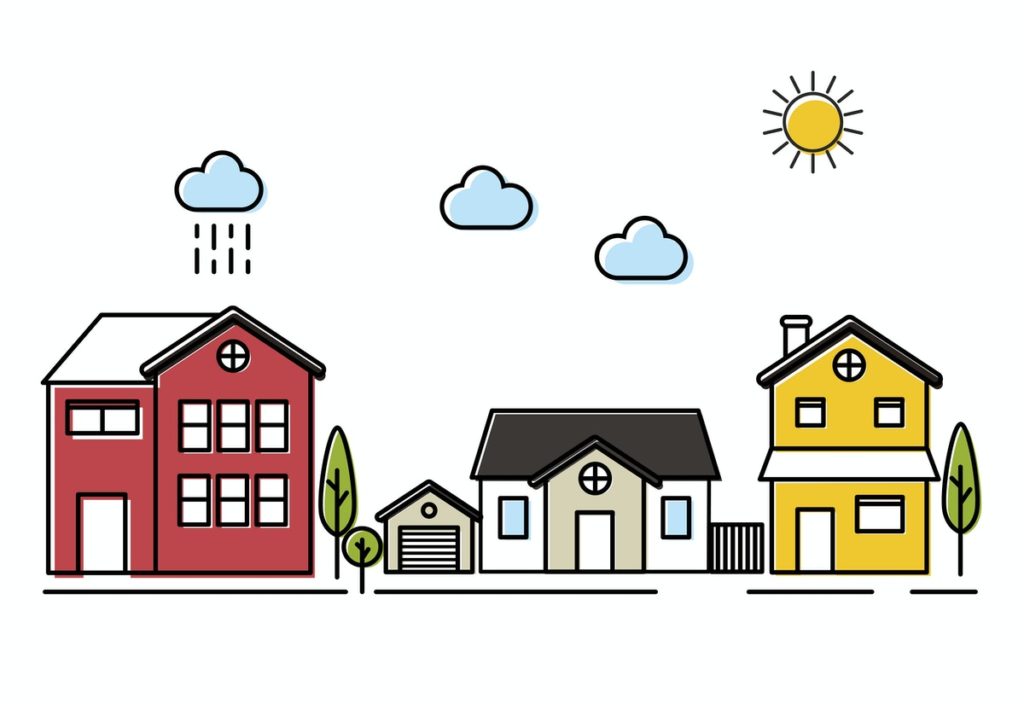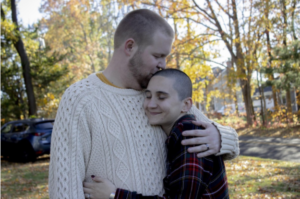
Hello Neighbor!
As I’ve gone through life and expanded my worldview, I’ve also expanded my personal range of what neighbor constitutes for me. To me, a neighbor is someone in my neighborhood; the person ringing me up at the store, the homeless person on the corner; the person in the car next to me; someone in a state or country next to us; and people all over the world. I try to support and fight for people worldwide, people I don’t know, people who I expect nothing of in return. I fight for them because it’s the neighborly thing to do.
All that being said, each of us has the ability to increase the level of our society’s neighborliness or decrease it. Like paying it forward, acting neighborly promotes exponential growth of kindness and positive action. When you see those things that restore your faith in humanity, it often involves people acting neighborly on the broad scope of things. And sometimes, when our faith is restored in humanity, it inspires us to put more kindness back into humanity.
March 20th is #WontYouBeMyNeighborDay, so I felt inspired to write about my take on neighborliness, how the concept evolved over human history, and how to be more neighborly in general.
“Won’t you be my neighbor?”
The famous words of the late Mr. Rogers, television icon of the early 1960s to the early 2000s, encouraged his young audience to be neighborly. Always, he reminded us, “It’s a beautiful day in the neighborhood.”
Mr. Rogers engaged in various topics on the show, from dealing with emotions, expressing love and acceptance, and being kind to and supportive of others. To children taking the words at face value, the word neighbor extends to someone next door or down the street. But there’s a deeper meaning to the word ‘neighbor’ Mr. Rogers proposes. He makes kids feel like he’s talking to them personally, no matter where they are in the world.
He expresses the idea that he cares about you, supports you, and believes in you; all without ever meeting you.
This, combined with the other lessons he taught in the show, characteristics of empathy and compassion begin to develop. Applying that to the idea of what “neighbor” entails, we see how we could view someone thousands of miles away from us as part of our community. It makes us empathetic to the plights or experiences of other people outside of our immediate groups and communities.
When Mr. Rogers asks us to be his neighbor, he means all of us; no matter our skin color, our religion or lack thereof, our ethnicity or country of origin, our culture or preferences or lifestyles, or anything else. So how could we go from being raised on messages from shows like Mr. Rogers’ Neighborhood, or even perhaps Sesame Street, only to find ourselves in this world where we seem to barely tolerate or interact with our neighbors or others in our community, let alone show basic human empathy?
A Sense of Community
Many of us grew up in a world where we don’t know our neighbors personally or even their names. We keep to ourselves for the most part. We might know the person next to us, and we may even identify some neighbors around us as “nosey” because they’re always on the lookout. Sometimes that nosiness certainly crosses a line. But most of the time, it’s nice to have someone looking out for the rest of the people in your neighborhood, especially if something happens, like a break-in or a fire.
Neighborliness extends to community watchdogs and those advocating for the most vulnerable of our communities. It also relates to people who dedicate themselves to working for others and their communities or country. We saw this during the 2020 election when Senator Bernie Sanders campaigned on the notion of “Not Me; Us” and encouraged people to fight for someone they don’t know. It’s the root of the push for things like Medicare For All, raising the minimum wage, and acting on climate change. We don’t want others to suffer, so we work collectively to make things better for everyone in our society.
This article isn’t simply about the people who live next door or across the street. Nor is it really about Mr. Rogers; it’s about neighborliness.
Neighborliness extends far beyond where we reside. It involves how we treat each other, as fellow human beings, whether they’re a legitimate neighbor next door, someone across town but still in our local community, across the border but are a neighboring country, across the ocean “worlds” away from us, and online.
The words community and neighbor can have varying levels of reach. We can refer to our community as local, national, and global. And as such, a neighbor includes anyone you extend your community to.
A Return to Our Roots
The earliest forms of neighborliness relate to what separates humans from other animals – caring for the sick and injured. Anthropologist Margaret Mead is said to have claimed that the first sign of civilization is the setting of a broken bone. This implies both a desire to help others and the willingness to care for an individual unable to contribute, whether temporarily or permanently.
We’re a highly social species with a strong foundation of community. Our ancestors, living very close together, depended on community, companionship, and collaboration to grow and survive and developed notions like “it takes a village to raise a child.”
People cooked all together or in small groups, sharing meals with friends and neighbors. In most cultures, no one, least of all children, elderly, or disabled people, starved. They might have low status or rank and get slimmer pickings from a hunt if they couldn’t contribute, but they didn’t starve. And if they couldn’t hunt, they usually developed other skills to barter and trade with others for things they needed.
People shared workspaces to practice their trade, collaborate with others, and share ideas. A community was considered wealthy if they stored enough food and supplies not just to survive but thrive. A community with skilled craftspeople like artists, carvers, clothing makers, and tool makers held greater status.
Our ancestors sat around community hearths, telling stories, sharing ideas, and discussing plans for hunts, trading, and traveling. Many of these early cultures shared their innovations with others, growing and progressing over time and allowing for our species’ advancement in the long run.
When visitors passed through, most groups of people were welcoming and generous. They shared meals and exchanged stories, messages, ideas, and information. Neighborliness has always been the backbone of human history and survival.
A Misconception of Our Nature
Many people claim that early humans exhibited ideals of “survival of the fittest,” forsaking anyone who wasn’t “useful.” However, it doesn’t appear to be an entirely supported idea. Skeletons of early humans have been found, providing evidence of people born with a disability limiting their mobility or had suffered grave injuries at a young age, yet lived many years.
In the survival of the fittest scenario, those who couldn’t contribute by hunting, gathering food, or making things of use, would have likely died young from starvation. Given the skeletons we’ve uncovered, it doesn’t appear to be the case. This suggests we’ve long since cared for and felt empathy for other people, regardless of their “use.”
In reality, to use the survival of the fittest argument in this day and age, especially how we’ve seen throughout the pandemic or even when people argue against things like making health care and housing a human right, it really comes off as blatantly ableist, if you ask me.
In addition, there’s an idea that humans are naturally savage and have always been prone to violence and war. This wasn’t always the case, as most people were friendly and open to things like trading and travel. There have always been more aggressive groups, especially when it came to controlling resources, but war is a relatively recent development in human history. Most people saw the benefit of collaborating with other groups and worked together to solve their problems, share resources, and even form larger groups. Over many thousands of years, our populations grew, people generally moved closer together in proximity, and we advanced faster over time.



